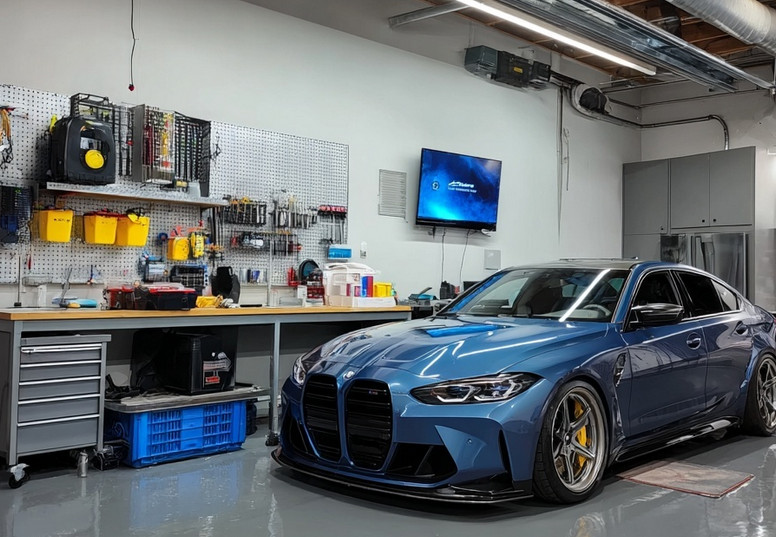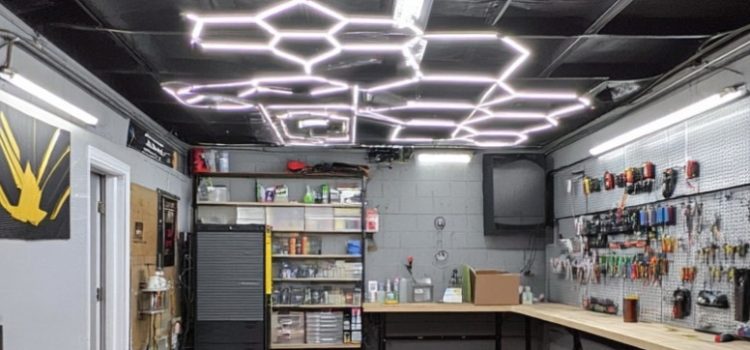It was a Saturday, and I was washing my car the same way I always did. A quick rinse, maybe a bit of shampoo, nothing fancy. But that day, I’d watched a detailing video on YouTube, one of those time-lapse ones where a totally trashed car gets brought back to life. That sent me down the rabbit hole. I started watching more. Paint correction, foam cannons, ceramic coatings. I ended up ordering a clay bar that night.
By the following weekend, I was deep into it. I detailed my own car, then my sister’s. Then my neighbor’s. I didn’t have a plan. No dream of being a business owner. But looking back, that was the beginning. What started as something to kill time turned into something I actually gave a damn about.

The First Attempt: Hobby or Business?
At first, I treated it like a hobby. I was happy spending a few hours on a car and getting paid in coffee or a six-pack. I had no pricing, no plan, and no clue. But I liked it. There was something about making a car look sharp again, especially when you see how surprised people get when you return it better than they expected.
My first paid job wasn’t even meant to be a paid job. A friend of a friend asked if I could “do what I did to James’ car” to hers. I said sure, showed up with a bucket, some soap, and a borrowed shop vac. She gave me forty bucks afterward. I felt like I hit gold. That moment stuck. It wasn’t the money. It was realizing I could actually do this for other people and not feel like an imposter.
The Garage Setup: Making It Work with What You Have
The garage wasn’t anything special. Old concrete floor with oil stains. One plug. Zero ventilation. But it was dry and it was mine. I cleared out the bikes, stacked the storage boxes, and made space for a folding table and some shelves. That was the start of my “shop.”
Lighting was terrible, so I bought a cheap work light off Marketplace. I hung up some microfiber towels on nails in the wall. It was rough. But it worked. I didn’t have a fancy pressure washer or a water tank. I used a hose reel and did rinseless washes when I had to.
Every week I added or changed something. Eventually I put up foam tiles on the floor, got better lighting, and found a way to set up a drying area without tripping over extension cords. The thing is, it never felt like it had to be perfect. It only had to be good enough to do a solid job.
The Learning Curve: Screwing Up and Getting Better
I learned most things the hard way. Scratched a car once by using a dirty mitt. Tried to polish without taping off the trim and left white compound streaks everywhere. Didn’t realize leather conditioner can stain suede until, well, I stained suede.
But I kept showing up. I watched videos while eating lunch. I followed detailers on Instagram and tried to copy their setups. I read product labels like I was cramming for an exam.
One job changed everything. A guy with a black SUV wanted a full detail, inside and out. I spent four hours on that paint, but it still looked swirly in the sunlight. He smiled, tipped me even. But I knew I hadn’t nailed it. That pushed me to really learn how to polish, how to read paint, and how to be honest with clients about what was possible.

Turning the Corner: From Weekend Jobs to Real Business
After a while, people started reaching out more. Friends, then friends of friends, then randoms from Facebook. I built a simple page with some before-and-after pics and started posting regularly. I had no logo, no branding. Just my name, a few shots of shiny cars, and a phone number.
I started treating it more seriously. I made a price list. Got some business cards printed. Opened a Google listing and begged my early clients to leave reviews. It didn’t take long before I had two to three cars every weekend. Then weekday evenings too.
My first ceramic coating job was nerve-wracking. I watched the product video six times before I touched the applicator. But it came out nice. The client loved it. That coating job paid more than my last two weekends combined.
Upgrades and Growth: What Changed Over Time
Once the jobs kept coming in, I started reinvesting. I bought a proper polisher. Upgraded my vacuum. Switched to better chemicals. I stopped grabbing the cheapest stuff on Amazon and started researching what real pros were using.
Scheduling became an issue. I was juggling messages from Instagram, Facebook, and texts. I started using a simple booking app to keep track. I raised prices. Not because I was greedy, but because I realized I was undercutting myself badly. People didn’t flinch. In fact, most new clients never saw the old prices anyway.
Things felt more stable. I started thinking of it like a real business instead of a side hustle. I had loyal clients, regulars who’d book their monthly interior cleans like clockwork.
The Hard Truths: What No One Tells You
Not everything clicked. There were frustrating days. Rainy weekends when three bookings canceled in a row. Exhausted evenings after doing interiors in 35-degree heat. Clients who’d ghost after confirming, or worse, show up two hours late and expect a full detail anyway.
Family didn’t always get it. Some thought I was wasting my time “cleaning cars.” Others asked when I was going to get a “real job.” That stung more than I expected.
There were times I questioned it myself. Wondered if this was sustainable. Wondered if I could ever step back from doing every job myself. But each time I considered slowing down, a new booking would come in, or a client would leave a glowing review, and I’d remember why I started.
What I’d Tell My Past Self (or You, Starting Out Today)
Stop waiting for things to be perfect. Use the gear you have, do the best job you can, and take photos after every detail. Price what your time is worth, not what you think people want to pay. And get used to saying no to stuff that doesn’t make sense.
There was a point early on where I felt stuck. I had some clients, but growth felt slow. So I reached out to the guys at MobiGleam. They had this clean mobile ceramic application and car detailing setup I saw on Instagram, and I figured, why not ask a few questions?
They actually replied, and we had a quick chat over video. We talked about everything—no-shows, burnout, pricing, marketing. One of them said something that’s stayed with me: “It’s not about your gear, it’s how you show up. If you act like a pro, people will treat you like one.”
That flipped a switch. I started holding myself to a higher standard, even when working out of a cluttered garage. It wasn’t about pretending to be bigger than I was, just about being consistent, clear, and proud of what I was offering.
Where It’s Going Now (and What’s Next)
These days, I’ve got a steady flow of clients and a setup that works. It’s still a home business. I haven’t moved into a shop yet, but I’m okay with that. The flexibility means I can work around family, take breaks when I need to, and pick my own schedule.
I’ve started reviewing products on the side. Talking about what works for me, what’s overhyped, and what’s actually worth the money. That’s brought in a bit of affiliate income, which has been a nice bonus. Might even turn it into a small blog or YouTube channel one day.
I’ve also been mentoring a couple of local guys who want to start detailing part-time. I tell them what I wish I knew: take photos, be upfront, don’t overpromise, and charge like your time matters.
A Few Final Words
If you’re thinking of starting something similar, whether it’s in your garage or out of the back of a hatchback, don’t overthink it. Start with one car. Do a solid job. Take pictures. Share them. Learn from your mistakes. Talk to other detailers.
You don’t need a fancy rig or a perfect shop to get started. What you really need is patience, a willingness to learn, and the guts to keep showing up, even when it’s slow. If I could go from a beat-up garage with a single plug to building something that supports me, you can too.
And hey, the foam cannon is optional. The hustle isn’t.
